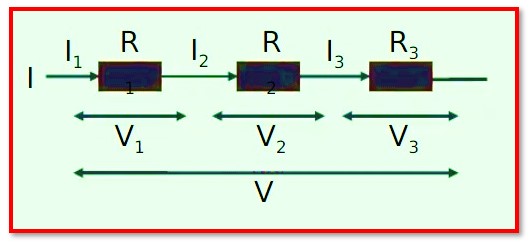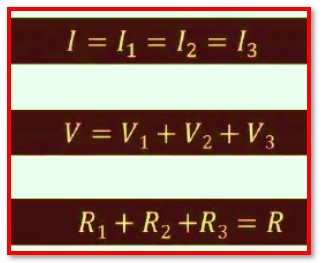Series Circuit:
A circuit is said to be connected in series when the same current flows through all of its components. The electricity in these circuits can only flow in one direction.
Each component in a series circuit receives the same amount of current, and the voltage across the circuit is equal to the sum of the voltage drops across its individual components.
The current in a series circuit:
Each component in a series circuit receives an equal amount of current. This is as a result of the current flow having just one path. The flow rate, or “marble speed,” at any given place in the circuit or tube at any given time must be constant because marbles in a tube represent an example for how electric charge travels via conductors.
Each charge will progressively travel through each resistor as it flows through the loop of the circuit.

In a series circuit, the current is uniform throughout.

Resistance for a Series Circuit:
Calculating the total resistance of several resistors illustrates the distinction between series and parallel. In a series circuit, the total resistance (RTotal) is simply the sum of the individual resistances, so

The total resistance of the path is equal to the sum of the individual resistances since the circuit is in series.

Characteristics of Series Circuit:
1. The overall resistance increases during series connections, increasing connect resistance.
2. In a series circuit, the flow of current is constant.










